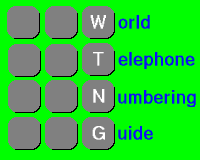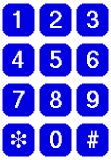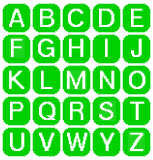


 Main Page
Main Page
 Calendar
Calendar
 Glossary
Glossary
 History
History
 Regional Services
Regional Services
 Special Services
Special Services
 What's New
What's New

|
|
|
| Updated 2 June 2011 | By Country Code | By Country Name | Other WTNG pages | Acknowledgements | ||

|

|

|
 Main Page
Main Page
 Calendar
Calendar
 Glossary
Glossary
 History
History
 Regional Services
Regional Services
 Special Services
Special Services
 What's New
What's New
|
|
||
|
|
Dominican Republic | +1 (809), +1 (829), +1 (849) | ||||
Area Code: 3 digits Subscriber Number: 7 digits Trunk Prefix: 1 International Prefix: 011Also see Caribbean Nations.
Sources:
Dominican Today (13 February 2010)
NANPA Planning Letter PL-387R1 (14 April 2009)
(with info courtesy Risto Nykänen)
Range Service ----- ------- +1 829 473xxxx fixed +1 829 535xxxx fixed +1 829 538xxxx fixed +1 829 545xxxx fixed +1 829 565xxxx fixed +1 829 567xxxx fixed +1 829 573xxxx fixed +1 829 575xxxx fixed +1 829 578xxxx fixed +1 829 581xxxx fixed +1 829 582xxxx fixed +1 829 583xxxx fixed +1 829 586xxxx fixed +1 829 588xxxx fixed +1 829 590xxxx fixed +1 829 593xxxx fixed +1 829 594xxxx fixed +1 829 595xxxx fixed +1 829 596xxxx fixed +1 829 597xxxx fixed +1 829 681xxxx fixed +1 829 687xxxx fixed +1 829 688xxxx fixed +1 829 710xxxx mobile +1 829 724xxxx fixed +1 829 971xxxx fixed(information courtesy Tricom)
Calls within the Dominican Republic will be required to use a 10-digit format including area code, replacing the existing 7-digit format.
Timeline:
31 January 2005 - start of permissive use of 7-digit and 10-digit dialling within Dominican Republic.
1 July 2005 - new +1 829 area code commences service and is expected to be reachable from other nations; +1 829 555.9999 test number activated.
1 August 2005 - 10-digit dialling within the Dominican Republic is mandatory; previous 7-digit format is discontinued. This is to make way for introduction of new subscriber numbers in +1 829.
1 October 2005 - earliest date for which regular subscriber numbers for +1 829 enter into service.
Sources: NANPA Planning Letter PL-338, 2 August 2004.
Indotel announcement (9 September 2004, via ITU).
See also Indotel press bulletin (2004, in Spanish).
(tip courtesy Randy King)
Number Range Type of Service ------------ --------------- +1 809 985 xxxx fixed +1 809 99x xxxx mobile/cellSome problems were reported in calling to the wireline/fixed numbers under +1 809 985 xxxx. Carriers in other nations should be allowing calls to these numbers.
Source: Tricom
Carriers include:
See list of subscriber number central office codes.
An older list of codes is available from 22 February 2002.
Also see numbering information from Indotel (via ITU).
Some updates courtesy Mark J Cuccia.
 Return to Top
Return to Top